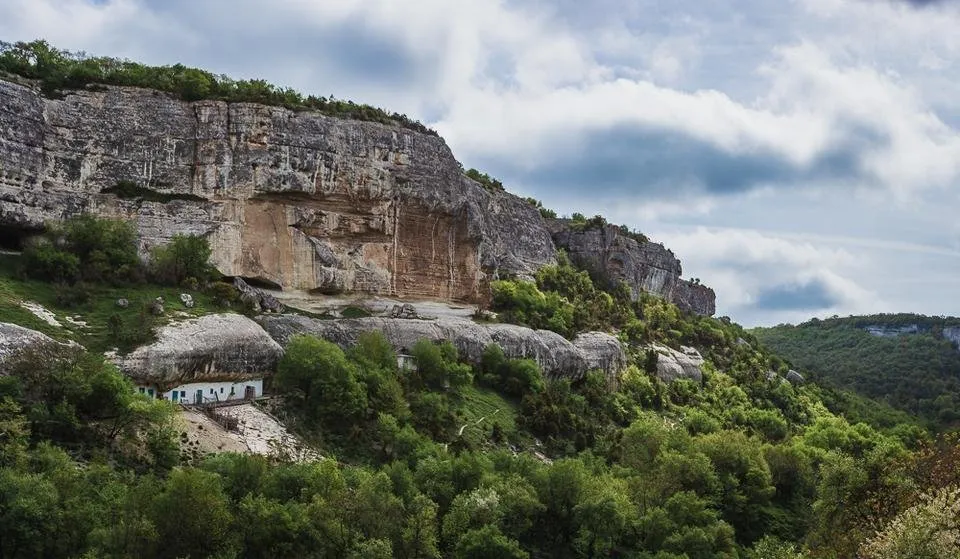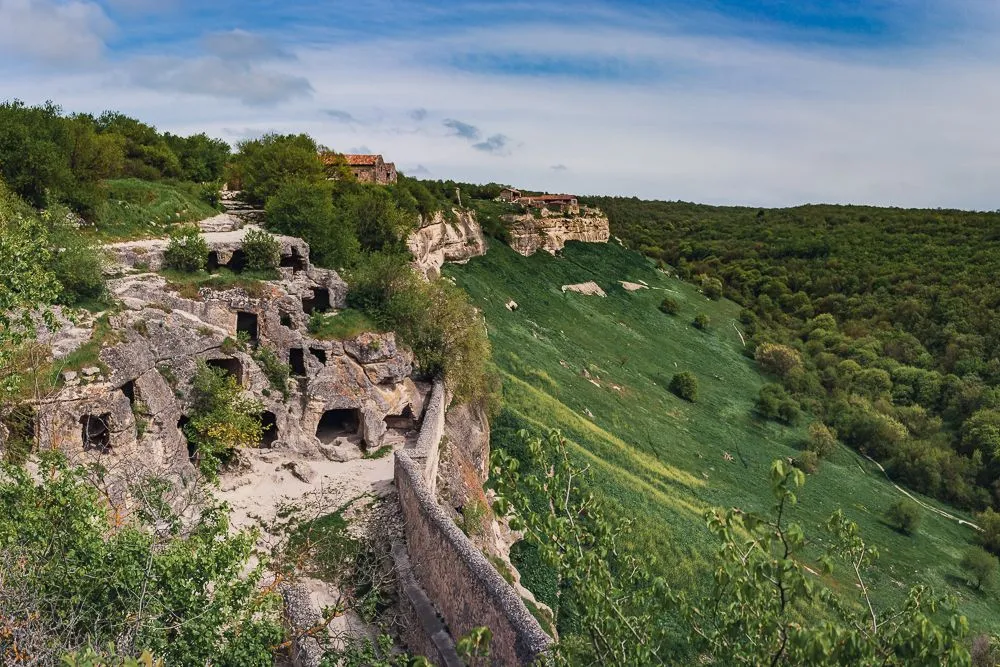The last week of Season 2 on @photogames is when the photo stars, who hosted these season, are playing against each other. And the first game titled PAST made me dig deeper into my archive.
My time machine got me ten years back into 2008. I was still living in Ukraine, the country I was born, but don't live there anymore, to the Crimea, which was still Ukrainian (it was a part of Ukraine till Russia annexed it in 2014). I was just married to my wife, and we didn't have kids yet. Completely another PAST life if you ask me.
Road to Chufut-Kale
When we were living in Ukraine, we used to hike in the Crimean mountains every year. That year we arrived two days before our group and spent them exploring Bakhchisaray and surroundings. Chufut-Kale is one of the most famous places around and in a whole Crimea. It is located in 3 km near Bakhchisaray, and we just walked there.
As soon as we went to Mariam-Dere Tract, we found Bakhchisaray Cave Monastery carved out of a cliff. It was founded around VIII century [1] .

Monastery is carved out of a cliff

Bell tower and view to a valley
This is the valley we need to go to Chufut-Kale. The views here are beautiful.
We went further down to the tract. It is a pretty old road. I think it is as old as Chufut-Kale. It is ok to walk, but now I am looking at it with my experience of travelling with kids and trying to imagine us with a stroller here. It wouldn't be an easy hike.
Finally, we saw the first signs of Chufut-Kale.

Kenassa buildings and the walls of Chufut-Kale
Chufut-Kale
We went up and found ourselves near the Southern aka Secret gates, which are now is the main entrance to Chufut-Kale.
Some history
Some researchers tend to think a town appeared here in V-VI centuries, the others think it was about X-XI centuries. The first mentions in the written sources were in the XIII century. And right at the end of that century, Crimea was raided by Tatar horde. Tatars seized the town then known as Kyrk-Or and quartered there their garrison.
In XV century Kyrk-Or was a capital of the first Crimean Khan, Hadji-Girei.
After the defeat of the Golden Horde in XV century, Kyrk-Or lost its importance and was mostly used as a prison for aristocrats. Only the Karaites lived there due to restrictions on stays in other towns of the Crimean Khanate. In the XVII century, Kyrk-Or got the name of Chufut-Kale (Jewish fortress).
In XVII century Crimea became a part of Russian Empire, Karaites were permitted to live anywhere in the Crimea, and the town was deserted by the XIX century. Now it is ruined.[2], [3]
There are the caves of old Christian monastery right near the Southern Gates.
Down the Kenassa Street, there are two kenassa buildings (Karaite synagogue). The bigger one was built in XIV century and the smaller in XVI century [3].
Then we headed to the Mausoleum of Dzhanike-Khanym. It was built in 1437 in memory of Golden Horde khan Tokhtamysh' daughter.[4]

Road to the mausoleum Dzhanike-Khanym

Mausoleum Dzhanike-Khanym and the Middle Gates
The view from the North side of the plateau behind the mausoleum is breathtaking. It inspired the famous Polish poet Adam Mickiewicz to write the poem The Pass Across the Abyss in the Tschufut-Kale (Droga nad przepaścią w Czufut-Kale)[5]:
The humble horse alone has wisdom here.
He knows where blackest the abysses leer
And where the path in safety leads us down.
Pray, and look upward to the mountain's crown!
The deep below is endless where you peer;
Stretch not the hand out as you pass, for fear
The added weight of that might plunge you down.
And check your thoughts' free flight, too, while you go;
Let all of Fancy's fluttering sails be furled
Here where Death watches o'er the riven world.
There are lots of caves in this part of Chufut-Kale. Some researchers tend to think they were inhabited, the others think they were mostly the utility rooms.
Some of the interiors are quite nice. I could live there. At list for the panoramic view.
We had done imagining our cave lives and walked to the oldest structure of Chufut-Kale. The Middle Gates (Ortha Kapu) were built in V century[2]. They are the part of the fortified wall between the new and old towns.

Road to the Middle Gates

Middle Gates

Middle Gates and the Main Street
Picture the streets with the two-store buildings on both sides. That was Chufut-Kale in its best days.

Main street near Firkovich's house
One of the still-standing buildings in Chufut-Kale is the house of Abraham Firkovich (XVII century). He was a famous Karaite writer and archeologist, collector of ancient manuscripts [6]. He did a lot to save Chufut-Kale for history.

View on Mariam-Dere near Firkovich's house

View on Firkovich's house as the flowers see it
Conclusion
We had spent several hours in Chufut-Kale. Since I had never been in the cave towns or even houses before, it was an exciting experience. And I am glad I have photos. I think one of the reasons I am into photography is my goldfish memory. My archive is like my own external HDD. And I pretty much love Google's and Amazon's Remember this day for that reason.
By the way, those days neither my wife nor I didn't have a camera built-in in the phones, and I entirely occupied our only camera. So, she needed to draw and paint everything she wanted to perpetuate in hard copy.
























